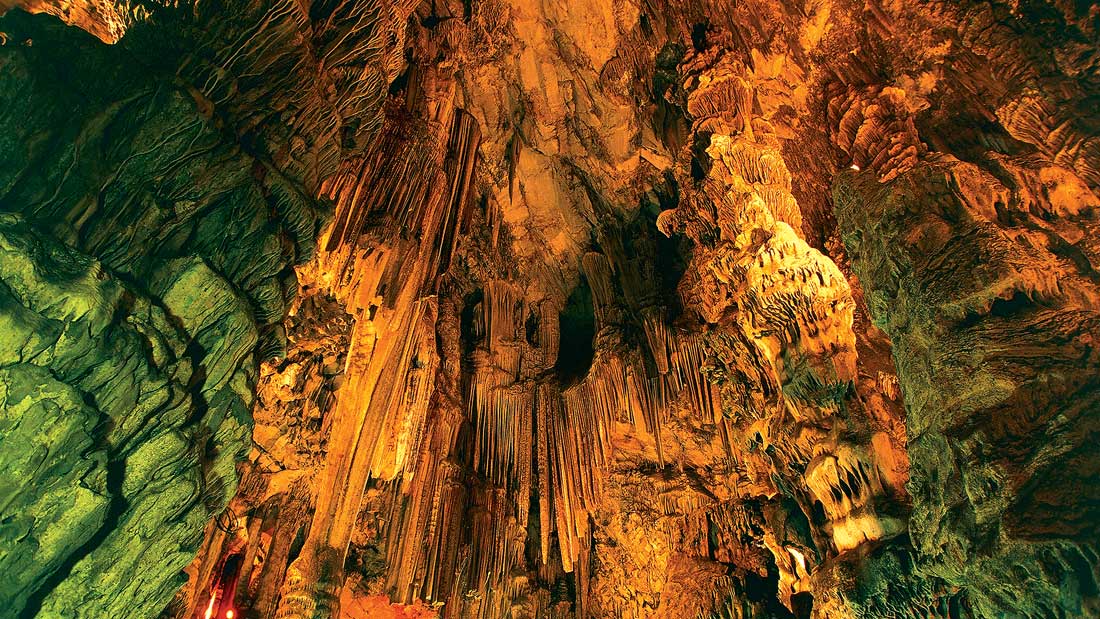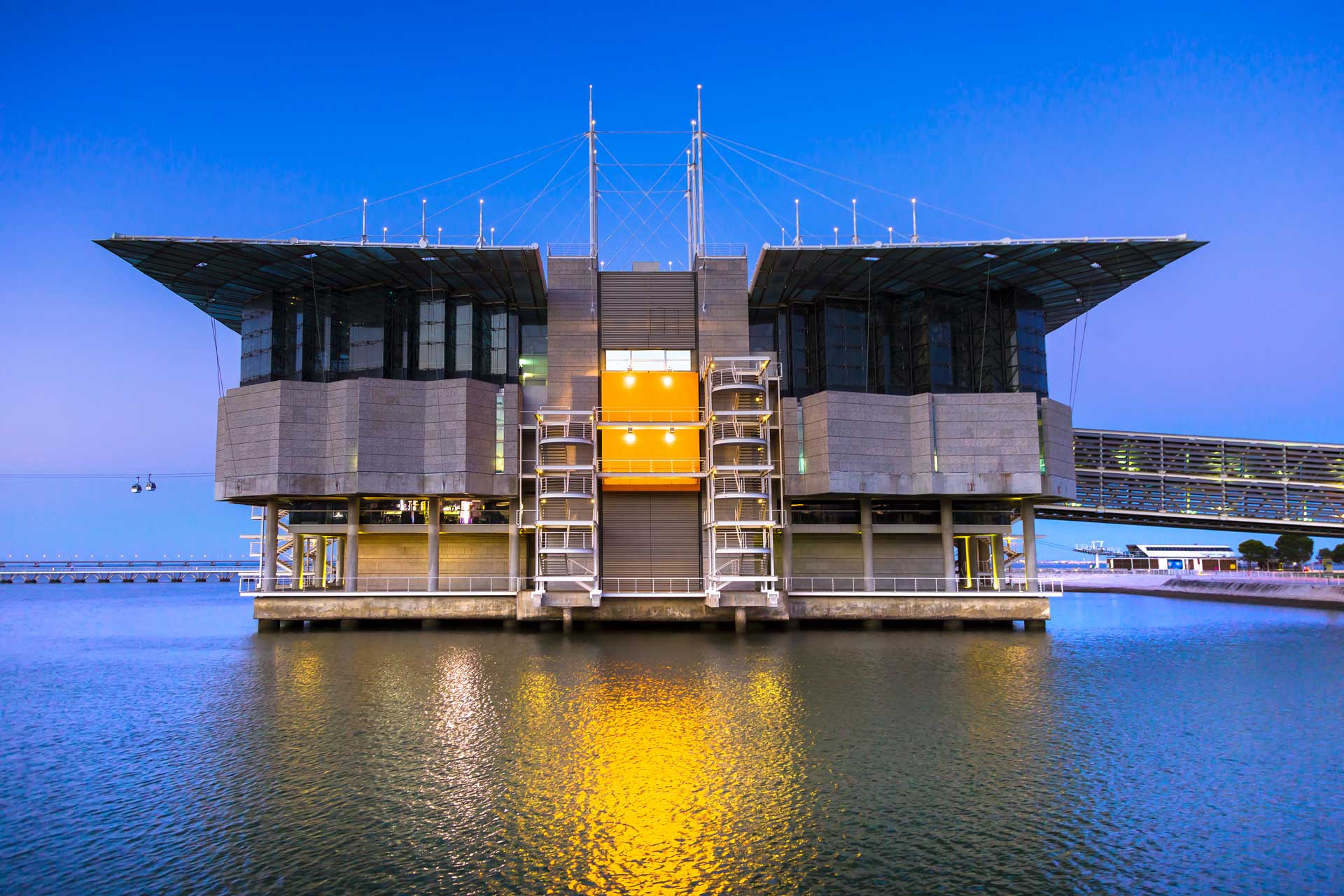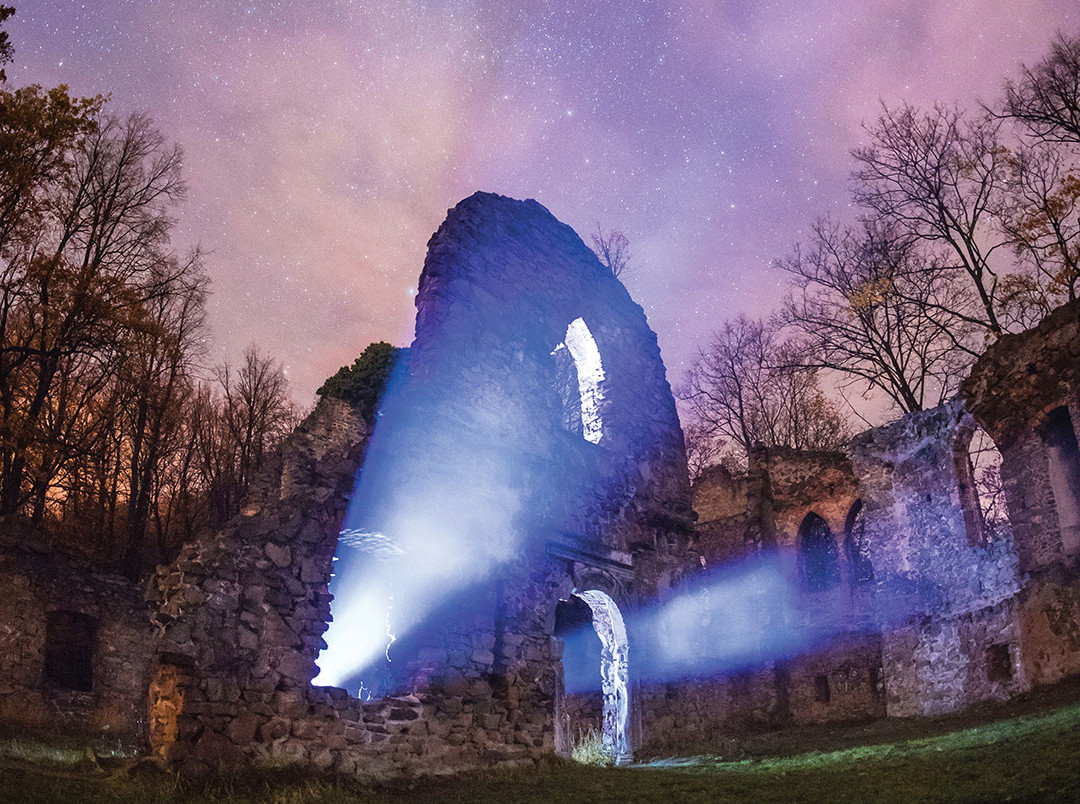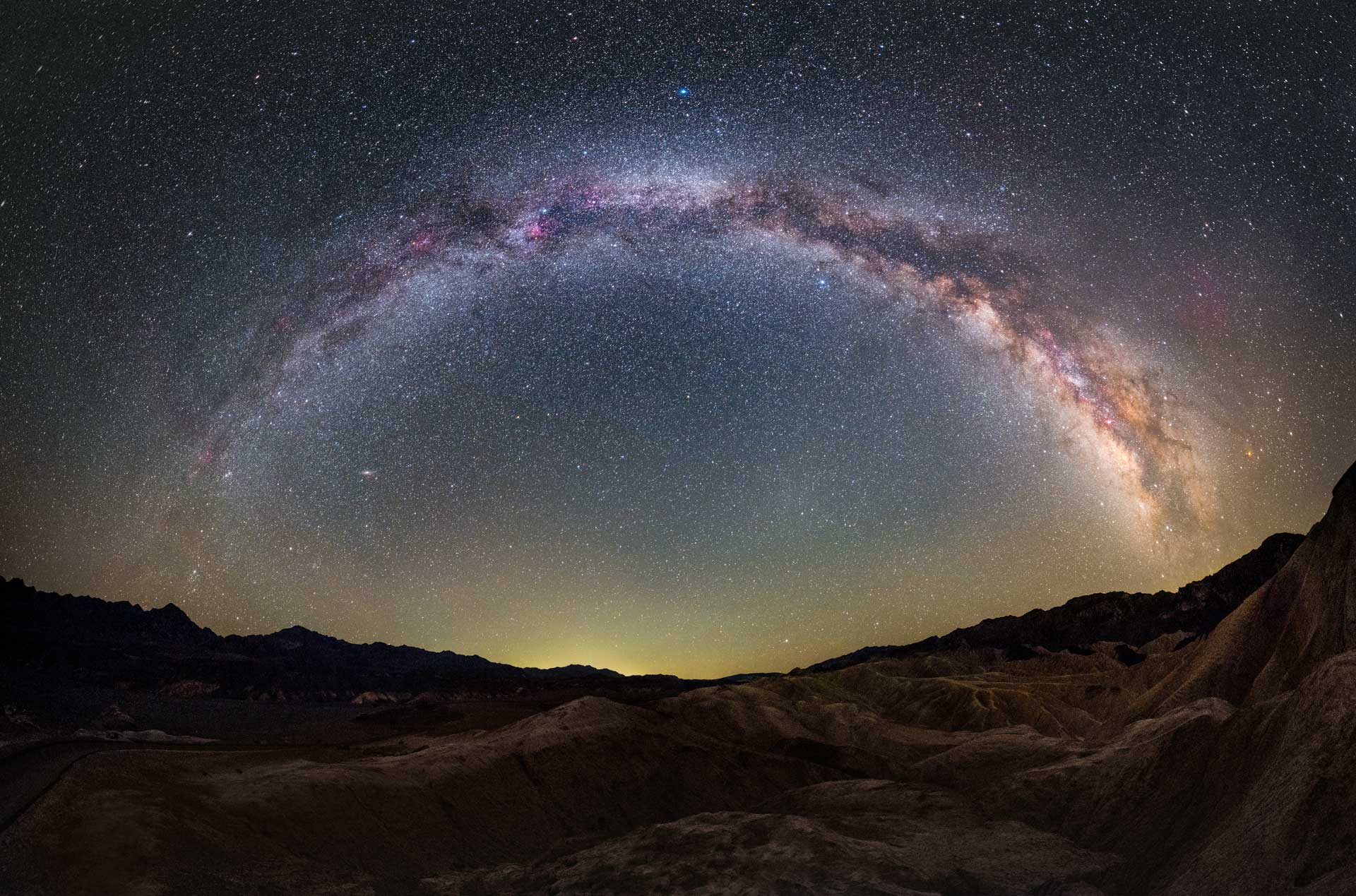
Taking Back the Night
LET THERE BE DARK
The evening light fades over the waters of the Alqueva reservoir, Southeast of Portugal. Seen from the Campinho picnic park, in the municipal district of Reguengos de Monsaraz, the sun sets in silence broken only by the bleating of sheep. Across the lake, the Earth’s shadow projected onto the atmosphere spreads a rosy glow, today less vivid than normal, because there’s mist in the air. Amidst competing claims on our attention, our eyes are now drawn to a less usual phenomenon: bulging on the horizon, the sun appears to point a kind of lantern ray up into the sky. We are not the only ones savouring the vastness of the landscape, or the uniqueness of the moment, which begs to be immortalised in a photograph. Standing alongside Apolónia Rodrigues, the founder of Dark Sky Alqueva, Miguel Claro, the distinguished astrophotographer, works on a photograph that does justice to the rare beauty of this sunset.
A few minutes later, the night has arrived in all its glory and Venus is the first to join the unfolding spectacle. A spectacle which Dark Sky Alqueva’s visitors have the good fortune to enjoy, using telescopes or just the naked eye, or even on nocturnal canoe trips on the lake. “Most people who live in cities and then come here have never seen the Milky Way with the naked eye and hardly believe it’s possible to see all these stars, they think they don’t exist”, Apolónia told us. The reserve was created in 2007 to give them back the dark nights which light pollution had banished from the streets, offering the chance to see a real night sky, untainted and dripping in stars, almost all year round.
These factors were crucial in getting the reserve certified by UNESCO and the World Tourism Organization (WTO) as a Starlight Tourism Destination. “In the United Kingdom, they’re doing very interesting things to tackle light pollution, but they’re missing one thing: clear skies. It’s our good luck here that more than 50 % of the nights are cloud free, and in a 10-year study, we manage to have an average of 286 clear nights a year. And certification means we can say this with confidence.
There are markets where this is highly valued, such as the United States,” she told us. Visitors can enjoy the pure wonder of stargazing, as well as a host of related activities that have sprung up, drawing on the region’s potential and adding variety to the experience: yoga sessions with movements inspired by the solar system, nocturnal birdwatching, and blind wine tastings, where the darkness means there’s no fussing about with blindfolds.
“I wanted to share what I thought was fantastic, be it the alignment of a planet above a castle, or the night sky over a megalithic monument.”
MIGUEL CLARO
“We have a wine expert, João Passos, who gets people so involved in the tasting that they can’t even tell a white from a red,” we heard from Apolónia Rodrigues. Apolónia also told us about the Dark Sky Party held by the lake normally in July, when live music sheds new light on all these experiences… in the dark. The idea is “basically, everything that can celebrate the night”. Even during the day. The perfect way to see the dawn is from a hot-air balloon, lunch can be at one of the restaurants on the Dark Sky route, and the sunset party at the observatory, with the house gin, Sharish Dark Sky.
The possibilities are varied and cater to a discerning international clientele, across every age group. “When it comes to the Portuguese market, it’s amazing to see that we have whole families who come stargazing. Kids, because they hear about it at school and are curious to see for themselves. The grandparents, because they always loved the night sky, but have had to get used to urban life and lost the connection. And the parents, who once dreamed of being astronauts and going into space, so when they hear about Dark Sky, it takes them back. People come to celebrate their birthdays…. you even see old ladies on their ninetieth birthday, with family and friends.”
The observatory is five kilometres away from the picnic park, in Cumeada. In the old primary school building, the Dark Sky Alqueva logo tells us we’ve reached the reserve’s headquarters. Miguel Claro is clearly proud to tell us that the art director responsible for designing their corporate identity was Gonçalo Jordão, winner of the 2015 Oscar for Best Art Direction for his work on The Grand Budapest Hotel.
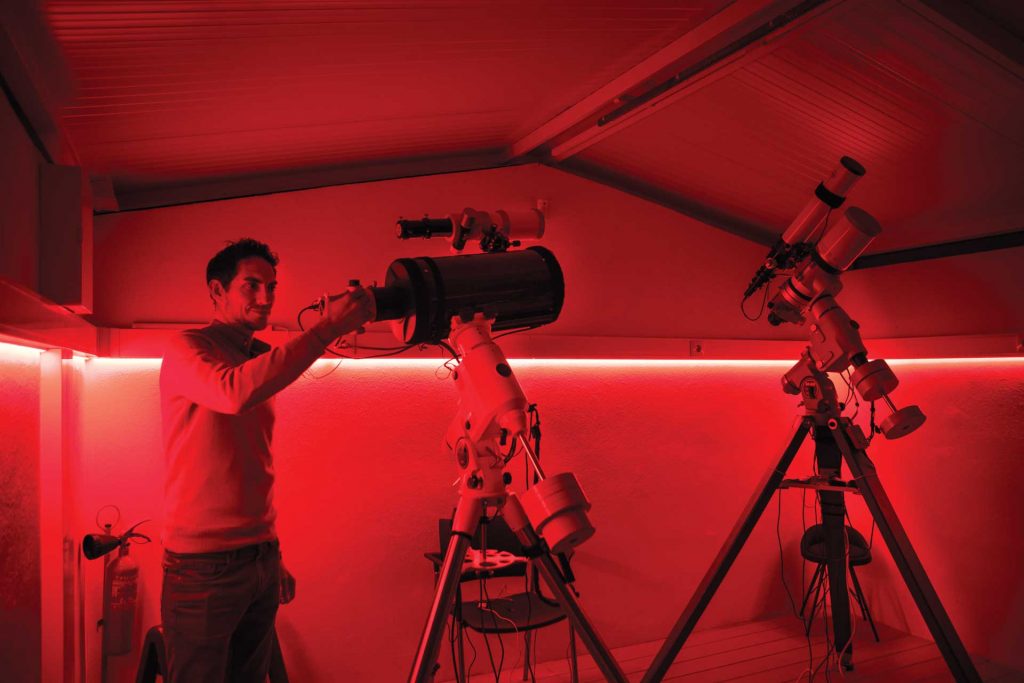
Stars. More stars lighting the way. Inside, we look around an exhibition of the astrophotographer’s work and learn that his connection with Dark Sky Alqueva dates back to 2012, when he was just about to launch his first book, Astrophotography: Starlit Images. Torn between his passion for astronomy and his love of photography, he found a way of working with both: “When I was twelve, I would spend my pocket money on astronomy magazines, like Astronomy or Sky Telescope, that I bought from a tiny kiosk not far from our house. So as soon as I got my first telescope, what I immediately did was to fit it with a camera, one of those video surveillance cameras we had back then. I thought it was amazing and I wanted to share what I thought was fantastic.”
Today he shares his knowledge and skills in astrophotography workshops at the reserve. He has specialised in landscapes, firstly because he soon realised that photographing the sky needed very expensive equipment and then because he loved the idea of creating images that told a story, that might be “the alignment of a planet above a castle, or the night sky over a megalithic monument.”
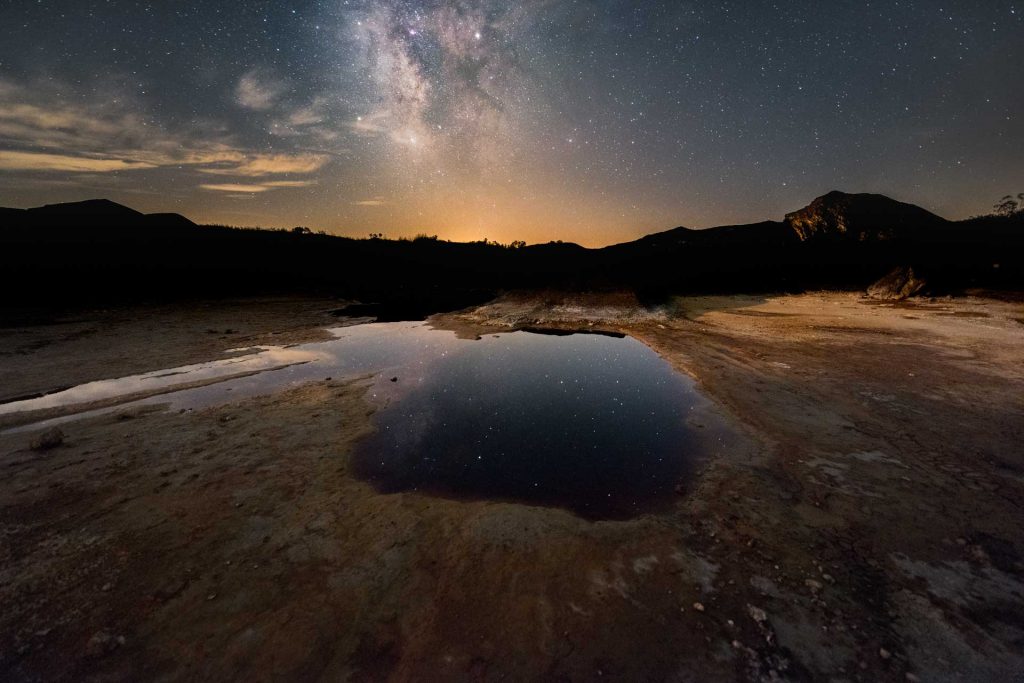
NEW GALAXIES
In its mission to defend the night sky, Dark Sky Alqueva has expanded across the border into Spain. With the certification of six Spanish municipal districts, the reserve is now the world’s first crossborder Starlight Tourism Destination, covering 7,000 km2 in Portugal and 3,000 in Spain. Elsewhere in Portugal, the project is expanding with Dark Sky Xisto, designed to replicate its success in the 27 Schist Villages – Aldeias do Xisto – in central Portugal, adapting the idea to a different region. Other plans include the Sky and Mystic Places Park and the Wine Way on the Milky Way, with visits to wineries and daytime tastings.
ROSETTE NEBULA
A HOLE IN THE HEART OF A ROSE
The Rosette Nebula is a large complex of bright emission and dark nebulae, located in the Monoceros region of the Milky Way Galaxy. 2500 young stars lie in this star-forming complex, whose radiation excites the atoms in the nebula, causing them to produce the reddish color of a hydrogen-alpha emission. Stellar winds have cleared out the cavity in the center, creating the illusion of its rose-like shape.
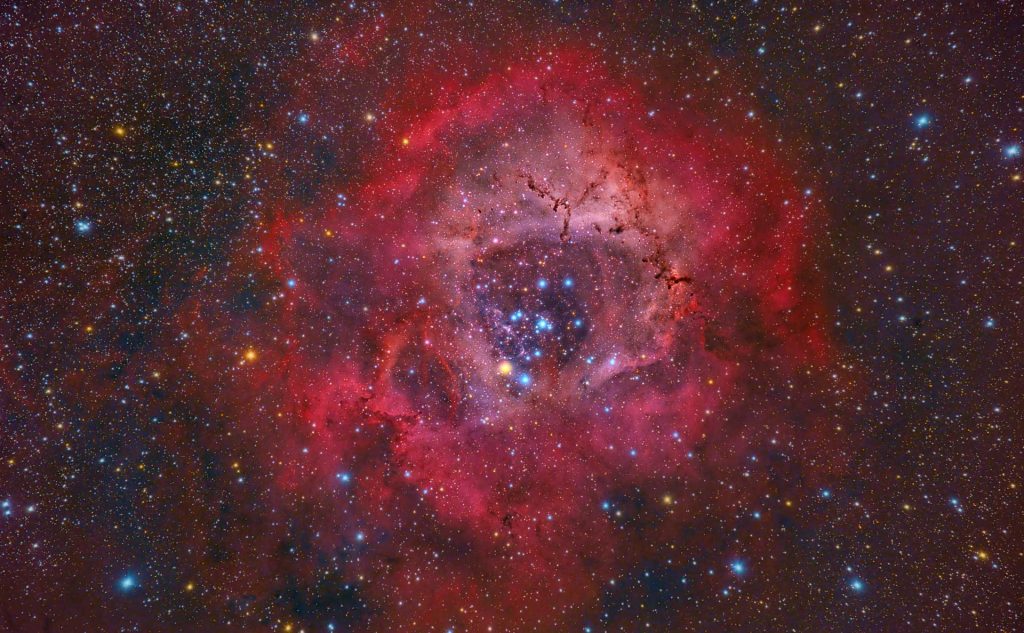
ORION NEBULA
PURPLE BLUE SMOKEY BUBBLE
The Orion Nebula (M42) is a diffuse and large nebula complex situated in the constellation of Orion. It glows in vivid shades of pink and purple blue. At its heart, and illuminating the surrounding region, there is a group of stars known as the Trapezium. Separated from it by only a dark lane of dust, we can see a miniature Orion Nebula, M43.
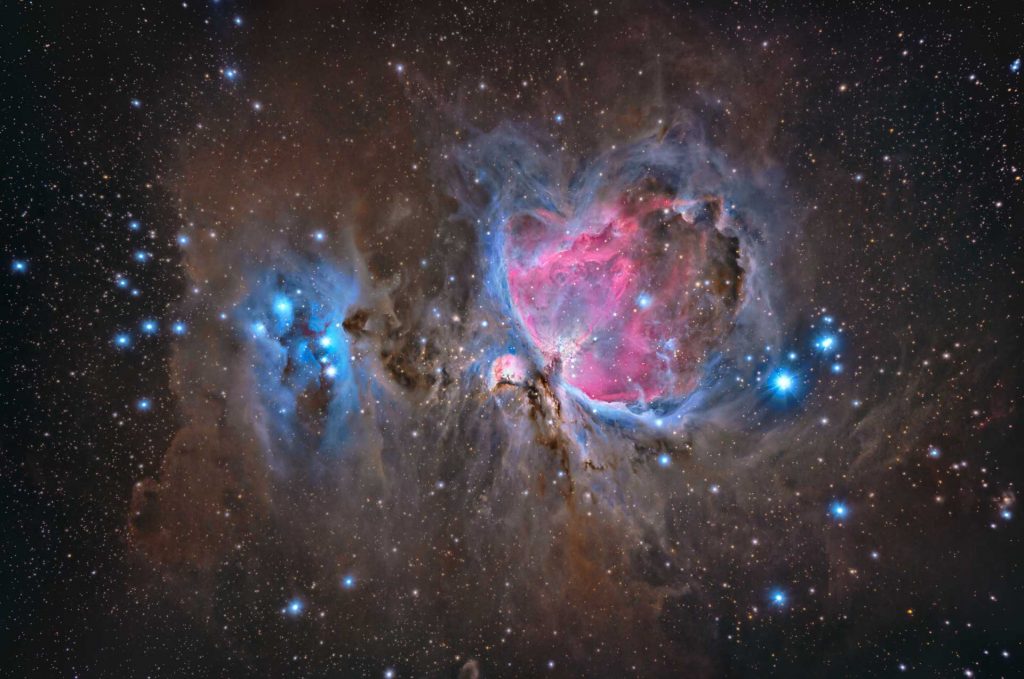
IN NASA’S ORBIT
His devotion to a blend of art and science that uses light to portray another form of light has won Miguel Claro a place in the astrophotography firmament: one of his photos was chosen as “Astronomy Picture of the Day” in the NASA catalogue. On an expedition to Pico, in the Azores, with a group and an Iranian friend and photographer in 2005, Miguel captured a phenomenon that the US space agency was currently investigating: airglow, the photochemical luminescence of the atmosphere.
“We set out at midnight, in the rain, with backpacks weighing 15 kilos, and two tripods. 2,400 metres, but you could hardly see anything. Then the skies cleared, at around 1,200 metres. I pointed my camera to where you could see Faial in the distance, and I’d just started to shoot when I noticed there were some strips of light,” Miguel told us. The real surprise came when he developed the film: “a rainbow in three colours,” displayed in three bands, resulting from the combination of luminescence in shades of green, yellow and red with the undulation caused by a slight disturbance in the atmosphere. “I was later contacted by a group of scientists who were studying airglow and had satellite images of the same phenomenon.”
NOMINATED FOR THE WORLD TRAVEL AWARDS
In March this year, Dark Sky Alqueva was nominated for the World Travel Awards, in the category for Europe’s Leading Destination. For Apolónia Rodrigues, the nomination is itself a huge achievement, considering the iconic European landmarks competing for the same title: the Eiffel Tower, in Paris, the Acropolis, in Athens, the Colosseum, in Rome, Buckingham Palace, in London, and Barcelona’s Sagrada Familia. The project has already picked up two tourism awards: in 2013 it was first runner up for the World Trade Organisation’s Ulysses prize, in the Innovation category, and in 2016 it took the European Commission’s ETIS award for social and cultural impact.
“Most people who live in cities and then come here have never seen the Milky Way with the naked eye and hardly believe it’s possible to see all these stars.”
APOLÓNIA RODRIGUES
